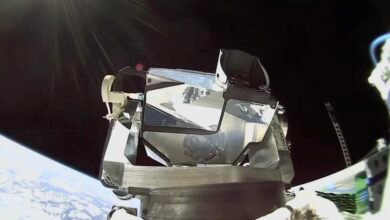China’s Space Station Now Features Wukong, an AI Chatbot

▼ Summary
– China’s Tiangong space station has introduced an AI chatbot named Wukong AI, designed to support taikonauts with navigation and tactical planning.
– Wukong AI was developed from a domestic open-source model and focuses on aerospace flight data to assist with manned space missions and improve efficiency.
– The AI system consists of two modules: one on the station for immediate problem-solving and one on Earth for in-depth analysis, working together to adapt to each mission.
– Wukong AI is distinct for combining intelligent assistant functions with a focus on space navigation, differing from other space AIs like the ISS’s Astrobee and CIMON.
– The Tiangong station is central to China’s strategy to strengthen its space power status, serving as a microgravity lab and future logistics platform for moon missions.
China’s Tiangong space station has welcomed a groundbreaking new crew member, an artificial intelligence assistant named Wukong AI, designed to support taikonauts during complex orbital operations. Drawing inspiration from the legendary Monkey King of Chinese folklore, this advanced chatbot specializes in navigation and tactical planning, marking a significant step forward in integrating AI into human space missions.
Developed using a domestic open-source model, Wukong AI was engineered specifically to meet the rigorous demands of manned spaceflight. Its knowledge base is heavily focused on aerospace data, enabling it to assist with everything from routine checks to emergency procedures. According to officials, the system enhances both operational efficiency and psychological well-being during extended missions.
The AI was integrated into the station’s systems in mid-July and began active duty in August, supporting a recent six-and-a-half-hour spacewalk. During the mission, it helped crew members install space debris protection equipment and conduct a full inspection of the station’s exterior. Taikonauts reported that the assistant delivered thorough and relevant information throughout the operation.
Wukong operates through a dual-module architecture: one component resides on the station for real-time assistance, while another on Earth handles deeper analytical tasks. This setup allows the AI to provide immediate answers to onboard queries while relying on ground-based processing for more complex computations. The result is a highly adaptive tool that improves coordination between space and mission control.
While other spacefaring nations have deployed AI in orbit, such as the ISS’s Astrobee robot and the CIMON support system, Wukong stands out for its specialized focus on space navigation and mission-critical decision-making. It represents a fusion of conversational AI technology with the unique requirements of extraterrestrial exploration.
Tiangong itself is central to China’s long-term ambitions in space, functioning as a microgravity research hub and a future staging point for lunar missions. The introduction of an AI assistant aligns with broader goals to establish a sustained human presence beyond Earth and develop interplanetary infrastructure.
The choice of the name Wukong is deeply symbolic. In Chinese culture, the Monkey King embodies intelligence, resilience, and relentless curiosity, qualities that resonate with the spirit of exploration and problem-solving essential to space travel. This AI isn’t just a tool; it’s a cultural nod to a legacy of ingenuity and adventure.
(Source: Wired)




